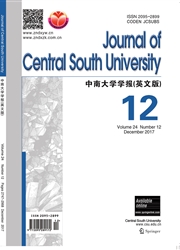

 中文摘要:
中文摘要:
Two simple and effective control strategies for a multi-axle heavy truck, modified skyhook damping (MSD) control and proportional-integration-derivative (PID) control, were implemented into functional virtual prototype (FVP) model and compared in terms of road friendliness and ride comfort. A four-axle heavy truck-road coupling system model was established using FVP technology and validated through a ride comfort test. Then appropriate passive air suspensions were chosen to replace the rear tandem suspensions of the original truck model for preliminary optimization. The mechanical properties and time lag of dampers were taken into account in simulations of MSD and PID semi-active dampers implemented using MATLAB/Simulink. Through co-simulations with Adams and MATLAB, the effects of semi-active MSD and PID control were analyzed and compared, and control parameters which afforded the best comprehensive performance for each control strategy were chosen. Simulation results indicate that compared with the passive air suspension truck, semi-active MSD control improves both ride comfort and road-friendliness markedly, with optimization ratios of RMS vertical acceleration and RMS tyre force ranging from 10.1% to 44.8%. However, semi-active PID control only reduces vertical vibration of the driver’s seat by 11.1%, 11.1% and 10.9% on A, B and C level roads respectively. Both strategies are robust to the variation of road level.
 英文摘要:
英文摘要:
Two simple and effective control strategies for a multi-axle heavy truck, modified skyhook damping (MSD) control and proportional-integration-derivative (PID) control, were implemented into functional virtual prototype (FVP) model and compared in terms of road friendliness and ride comfort. A four-axle heavy truck-road coupling system model was established using FVP technology and validated through a ride comfort test. Then appropriate passive air suspensions were chosen to replace the rear tandem suspensions of the original truck model for preliminary optimization. The mechanical properties and time lag of dampers were taken into account in simulations of MSD and PID semi-active dampers implemented using MATLAB/Simulink. Through co-simulations with Adams and MATLAB, the effects of semi-active MSD and PID control were analyzed and compared, and control parameters which afforded the best comprehensive performance for each control strategy were chosen. Simulation results indicate that compared with the passive air suspension truck, semi-active MSD control improves both ride comfort and road-friendliness markedly, with optimization ratios of RMS vertical acceleration and RMS tyre force ranging from 10.1% to 44.8%. However, semi-active PID control only reduces vertical vibration of the driver's seat by 11.1%, 11.1% and 10.9% on A, B and C level roads respectively. Both strategies are robust to the variation of road level.
 同期刊论文项目
同期刊论文项目
 同项目期刊论文
同项目期刊论文
 Combined Prediction Model of Death Toll for Road Traffic Accidents Based on Independent and Dependen
Combined Prediction Model of Death Toll for Road Traffic Accidents Based on Independent and Dependen Numerical evaluation of pollutant dispersion at a toll plaza based on system dynamics and Computatio
Numerical evaluation of pollutant dispersion at a toll plaza based on system dynamics and Computatio Driver's fatigue expressions recognition by combined features from pyramid histogram of oriented gra
Driver's fatigue expressions recognition by combined features from pyramid histogram of oriented gra Vision-based Classification of Driving Postures by Efficient Feature Extraction and Bayesian Approac
Vision-based Classification of Driving Postures by Efficient Feature Extraction and Bayesian Approac Classification of driver fatigue expressions by combined curvelet features and gabor features, and R
Classification of driver fatigue expressions by combined curvelet features and gabor features, and R Investigation and Analysis of Motorcycle Safety in Rural China: Case Study of Linyi, Shandong Provin
Investigation and Analysis of Motorcycle Safety in Rural China: Case Study of Linyi, Shandong Provin 期刊信息
期刊信息
